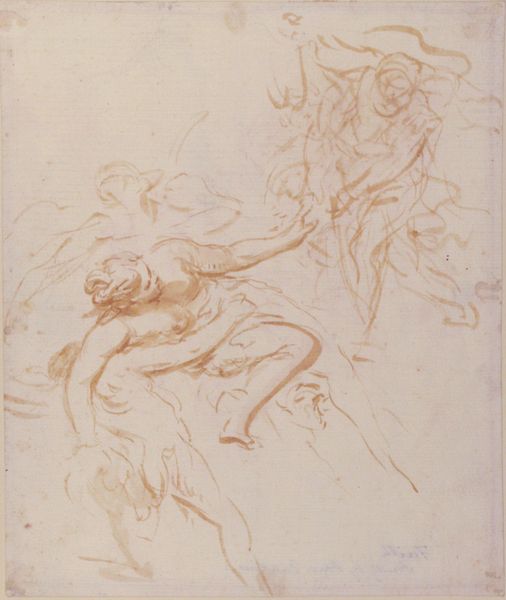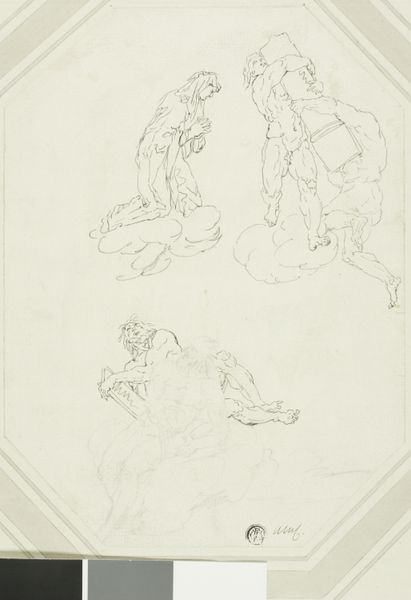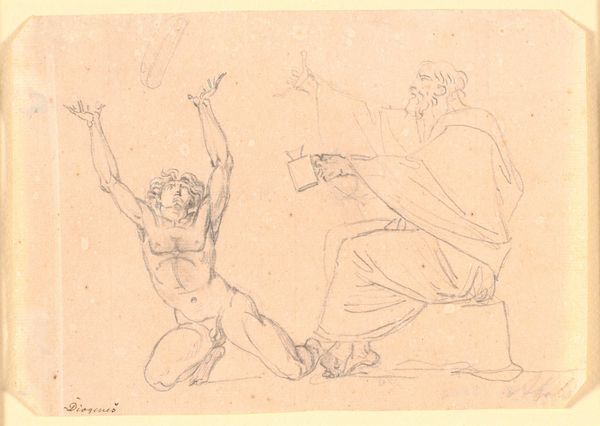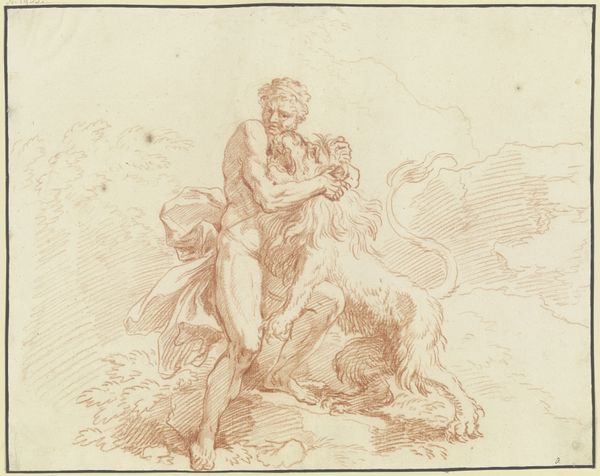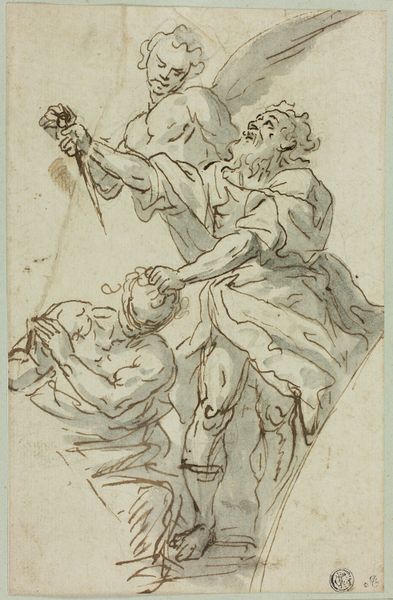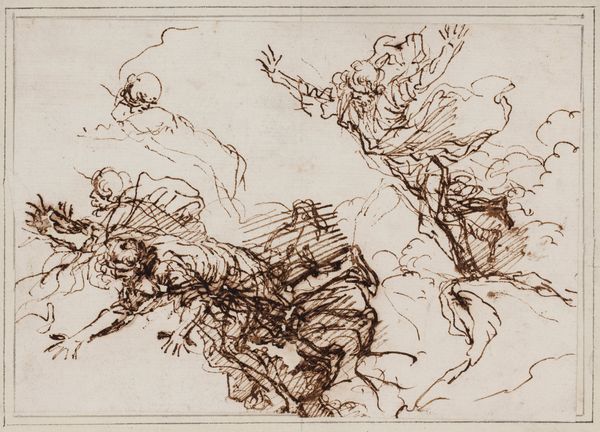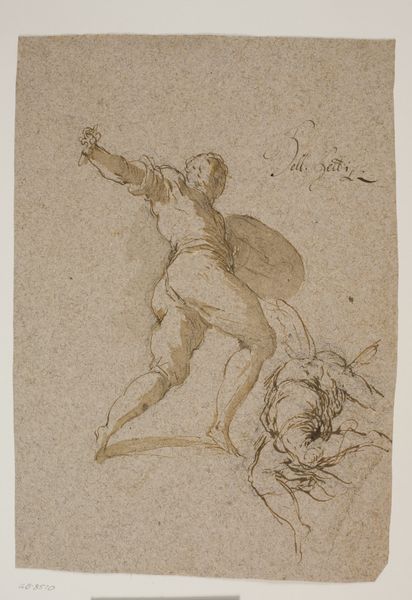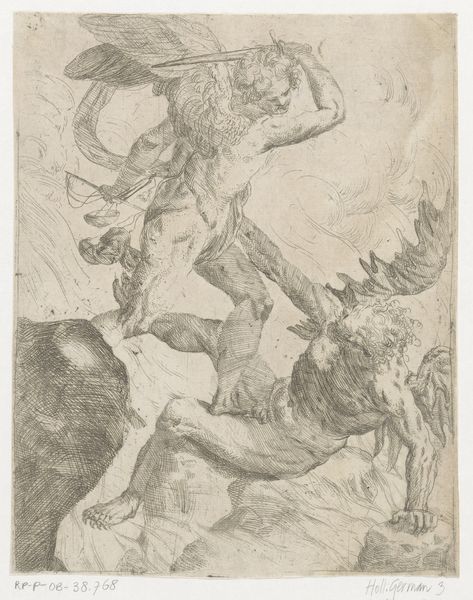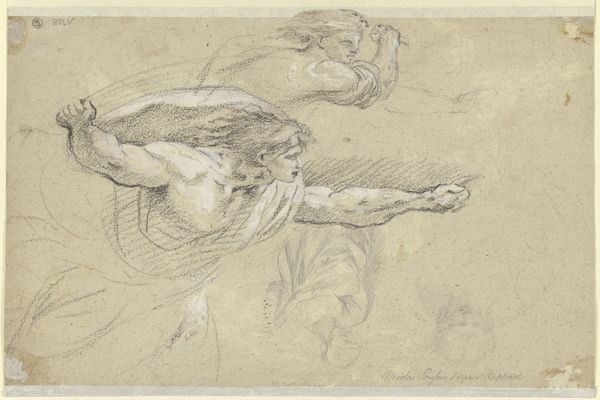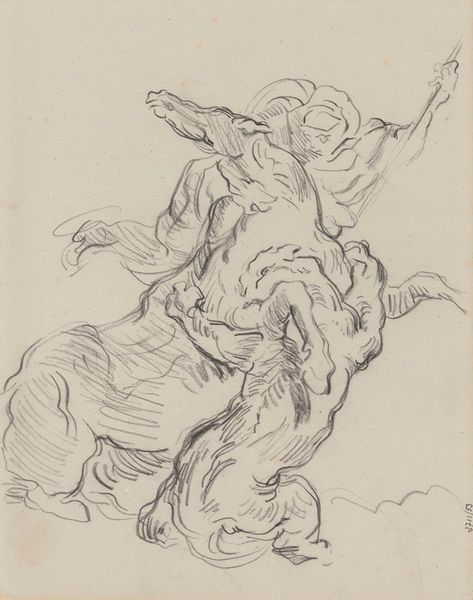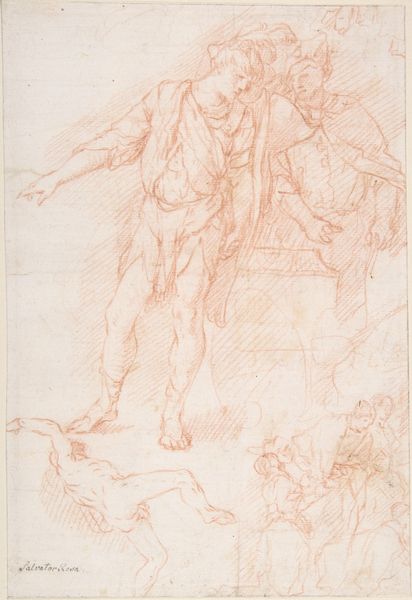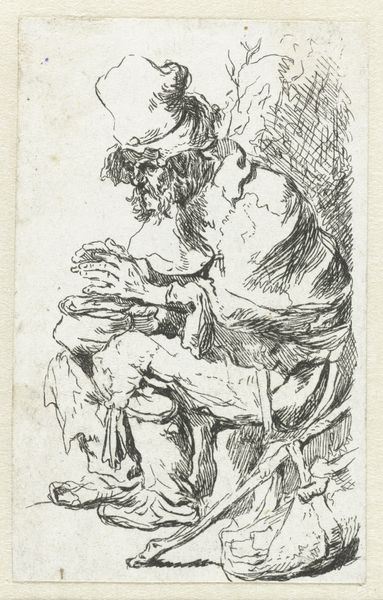
Dimensions: 190 mm (height) x 159 mm (width) (bladmaal)
Curator: Look at this intriguing pen and ink sketch by Lorenz Frølich, created in 1852. It's titled "Udkast til Skjolds kamp med bjørn," which translates to "Draft for Skjold's Fight with a Bear." Editor: My initial impression is one of raw energy. The diagonal composition creates a dynamic tension. It feels…unfinished, yet powerful. Curator: Exactly. Note the artist’s rapid strokes and use of line weight, varying to describe form and movement. Observe how he uses hatching and cross-hatching to render tonal values, especially on the bear's fur and the drapery of Skjold’s cloak. The composition clearly prioritizes depicting dynamism. Editor: The bear seems less defined than the man, almost like a primal force barely contained by the page itself. Is Skjold, with his somewhat classical garb, meant to represent a conquering hero, civilization taming the wild? Curator: It’s very likely. Skjold, in Norse mythology, is considered the first king of Denmark. Therefore, this struggle might symbolize the establishment of order, rule and civilization. A theme recurrent in the Romantic era, deeply linked to concepts of national identity. Editor: And the bear, a recurring symbol of raw strength, of the untamed aspects of nature. I find it interesting how their faces are almost touching. It’s not just a fight; there’s an intimacy, a merging of identities almost. This speaks to a culture's psychological relationship to its land, the constant negotiation between civilization and wilderness. Curator: That reading aligns well with the Romantic fascination for the sublime in nature, as well as Norse mythology which sought to explain the cosmos by personifying the forces of nature as characters with dramatic, compelling narratives. Editor: Yes, and the way the medium itself—ink on paper—serves the sketchiness and the "draft" nature of the piece so well. The vulnerability of the line mirrors the rawness of the encounter. Curator: Absolutely. Frølich's deliberate choices of medium and technique work together to convey not just the subject matter but also the ethos and deeper meanings within the narrative. Editor: The power of symbols can really deepen our engagement with what seems, at first glance, a simple historical depiction. Curator: Indeed. Frølich's composition reveals narrative art through the dynamic clash between Skjold and the bear and the potent, enduring symbolism they both embody.
Comments
No comments
Be the first to comment and join the conversation on the ultimate creative platform.
